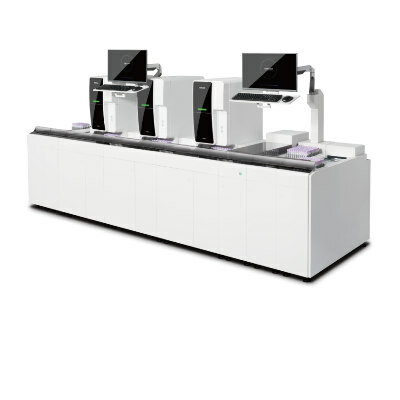Fluorescent Assay Monitors Potassium Channel Proteins in Real Time
By LabMedica International staff writers
Posted on 24 Feb 2011
A recent study showed how the potassium channel protein TREK1 is linked to the molecular basis of depression and why treatment with fluoxetine (Prozac) causes the same effect.Posted on 24 Feb 2011
Investigators at the University of California, Berkeley (USA) and the US Department of Energy Lawrence Berkeley National Laboratory (CA, USA) studied TREK1 regulation by Gq-coupled receptors (GqPCR) and phospholipids.
Since several reports have indicated that the C-terminal domain of TREK1 is a key regulatory domain, they developed a unique fluorescent assay to monitor the plasma membrane association of the C terminus of TREK1 in real time.
The investigators reported in the January 24, 2011, online edition of the journal Proceedings of the [US] National Academy of Sciences (PNAS) that fluorescence and functional experiments link the modulation of TREK1 channel function by internal pH, phospholipid, and GqPCRs to the association of the TREK1–C-terminal domain to the plasma membrane, where increased association resulted in greater activity. In keeping with this relation, inhibition of TREK1 current by fluoxetine was found to be accompanied by dissociation of the C-terminal domain from the membrane.
"Studying what the different protein parts of an ion channel do is a huge challenge," said senior author Dr. Ehud Isacoff, professor of molecular and cell biology at the University of California, Berkeley. "Over the years, my group has developed techniques by which the domains of channel proteins can be labeled with site-specific fluorescent dyes. Structural rearrangements of the labeled sites in the channel can then be detected through changes in the fluorescence."
"Whereas the inhibiting of serotonin reuptake remains fluoxetine's primary antidepression mechanism, many pharmacological agents have more than one target,” said Dr. Isacoff. "Our study shows that the inhibition of TREK1 by fluoxetine, which was found in earlier studies, is accompanied by an unbinding of the protein's C-terminal domain from the membrane. This is the first observation of the mechanism by which TREK1 might be regulated by antidepressant drugs.”
Related Links:
University of California, Berkeley
Lawrence Berkeley National Laboratory













